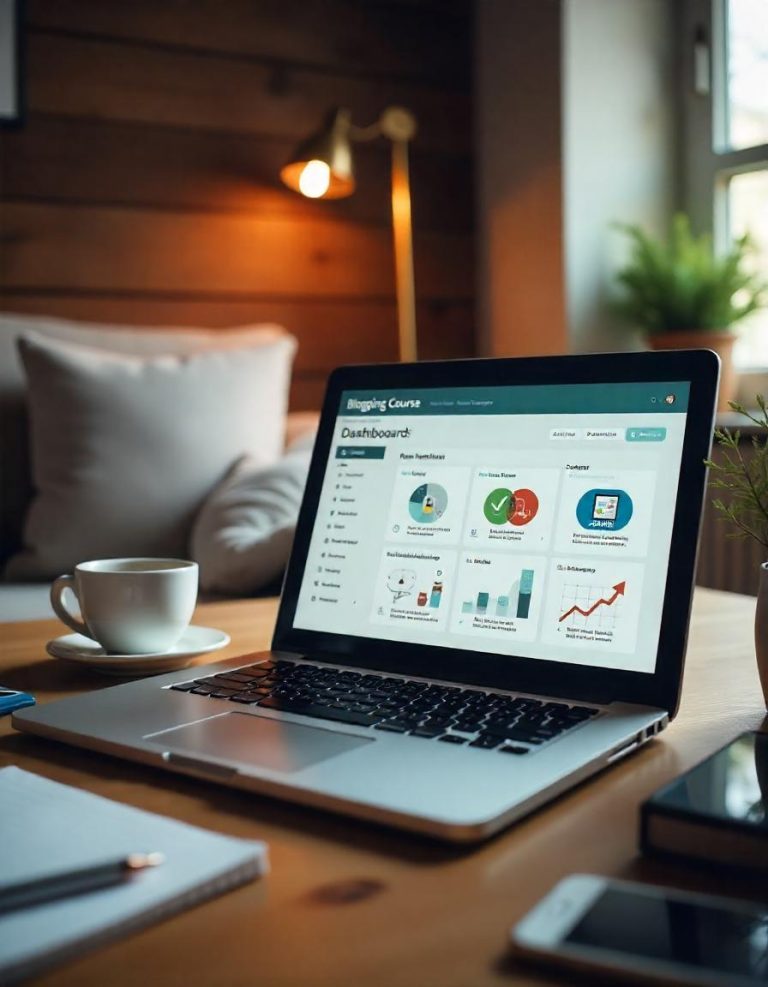Blogging Like A Website: Building A Professional Blog with a Site-Like Experience
In the age of digital media, the line between a blog and a full-fledged website is blurring. What used to be simple online journals are now highly professional platforms that reflect branding, strategic content planning, and user-friendly design. Creating a blog that operates like a website not only builds credibility but also enhances the reader experience and opens the door to more significant monetization opportunities.
Find Out How To Make Money As A Full-Time Writer/Blogger Guide
Here’s how to “blog like a website,” transforming your blog into a polished platform with diverse content, structured navigation, and professional features.
1. Establish a Clear Purpose and Audience
Before jumping into design and structure, defining your blog’s purpose and target audience is essential. Ask yourself:
- What value are you providing? Are you educating, entertaining, or inspiring your readers? For a professional feel, be clear about your blog’s niche and the specific value it offers.
- Who is your audience? Consider their demographics, preferences, and online habits. Tailor your blog content, tone, and design to meet their needs.
Establishing a clear direction will help you create content, branding, and design that feel cohesive and professional.
Find Out How To Make Money As A Full-Time Writer/Blogger Guide
2. Design a Structured Homepage
A structured homepage gives readers a snapshot of your blog’s focus areas. Consider including:
- A branded header and logo to establish visual consistency and make your blog memorable.
- Clear navigation links like “Home,” “About,” “Blog,” “Contact,” and any other sections that highlight your main offerings, such as a “Shop” or “Services” page.
- Featured posts or recent articles that give new visitors an idea of your best or latest content.
- Calls to action (CTAs), like subscribing to your newsletter or following on social media.
A well-designed homepage gives your blog a website-like structure and makes navigation easy for readers.
3. Organize Your Content into Categories and Pages
Instead of having all posts in a single feed, categorize your content into sections or pages. This makes browsing easier for readers and gives your blog a structured feel. Some tips for organizing content:
- Use main categories that align with your topics or themes, such as “Travel,” “Lifestyle,” “Tech,” etc.
- Create an “About” page that explains who you are and what your blog is about. This is often one of the most-visited pages on a blog.
- Add a “Contact” page with a form or email for direct communication.
- Consider a “Resources” or “Shop” page if you offer products, courses, or affiliate links.
Find Out How To Make Money As A Full-Time Writer/Blogger Guide
4. Integrate Professional Blogging Features
Features like analytics, SEO tools, and professional plugins are essential for running a blog that performs like a website. Here are some key elements:
- SEO Optimization: Install SEO plugins (like Yoast SEO for WordPress) to help your blog rank well in search engines. Optimize posts with keywords, meta descriptions, and image alt tags.
- Analytics: Tools like Google Analytics provide insights into visitor demographics, page views, and behavior. Use these metrics to improve your content strategy and focus on what readers enjoy most.
- Newsletter Sign-Up Forms: A newsletter can bring readers back to your blog and build a loyal audience. Consider using a tool like Mailchimp or ConvertKit.
- Social Media Integration: Make it easy for readers to share your content by adding social media buttons. Displaying your social media profiles also helps build community and credibility.
5. Incorporate Professional Branding Elements
Branding can help your blog stand out and make it more recognizable. Focus on:
- A consistent color scheme and font selection that reflects the tone of your blog.
- A unique logo and favicon that give your blog a professional identity.
- Branded visuals for posts using design tools like Canva to create custom images that match your brand.
Strong branding gives your blog a cohesive, polished look and reinforces your message with every post.
6. Focus on User Experience (UX) and Mobile Compatibility
User experience (UX) is central to a professional-looking blog. Ensure your blog is fast-loading, easy to navigate, and visually appealing on all devices.
- Use responsive design so your blog looks great on both desktop and mobile. Many themes offer this feature automatically.
- Keep your content scannable with short paragraphs, bullet points, and headings. This improves readability, especially for mobile users.
- Prioritize load time by optimizing images and using a reliable hosting provider. Slow websites turn visitors away and can affect your search engine ranking.
Find Out How To Make Money As A Full-Time Writer/Blogger Guide
7. Monetize Strategically with a Professional Touch
If monetization is a goal, approach it thoughtfully to maintain a high-quality user experience. Here are a few options:
- Display ads with caution to avoid overwhelming your readers. Place them in a way that doesn’t distract from the content.
- Affiliate marketing can be integrated seamlessly, especially if you recommend products related to your blog’s theme.
- Sponsored content and collaborations offer revenue opportunities, but ensure that they align with your brand to maintain authenticity.
- Offer premium content or services such as online courses, e-books, or consulting if you have expertise to share.
8. Engage and Connect with Your Audience
Building community and connection with your audience is critical for long-term success. Consider these strategies:
- Encourage comments and interactions by responding to comments and asking questions at the end of posts.
- Create social media pages for your blog, where readers can interact with you outside of your blog.
- Build an email list and send regular newsletters with updates, exclusive content, or announcements to stay connected.
Engagement creates loyalty, builds trust, and turns readers into subscribers and regular visitors.
Find Out How To Make Money As A Full-Time Writer/Blogger Guide
“Blogging like a website” is about merging the creativity of blogging with the structure and strategy of a website. By investing time in professional design, user-friendly navigation, strategic monetization, and branding, your blog can stand out as a polished, multi-functional platform that attracts readers and keeps them coming back. Whether you’re blogging for business, passion, or personal growth, turning your blog into a well-crafted digital experience is a step toward greater impact and success.







